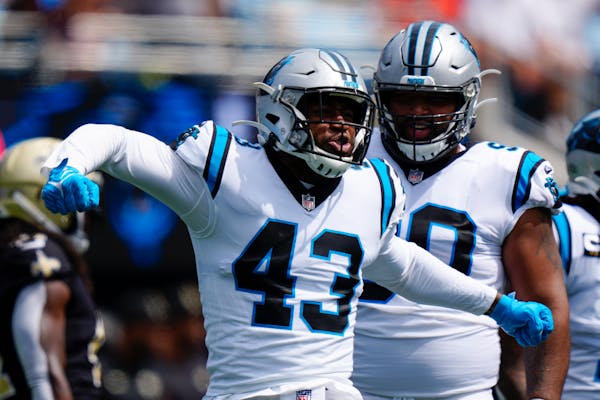 See
more of the story
See
more of the story
Mike Zimmer gave his offensive coaches a project this week. He told them to dissect situations and tendencies to understand, and help explain, why the Vikings offense hasn't scored a second-half touchdown since the season opener.
They could have knocked that out by lunchtime.
The title of the report could have been: Be More Aggressive.
Sample chapters: Trust Kirk Cousins. Stop running on second-and-long so often. Throw the ball to Justin Jefferson until somebody truly stops him. Don't sit on the ball at the end of the half. Playing not to lose is a bad idea.
Zimmer and offensive coordinator Klint Kubiak should take the Detroit game plan from last week and toss it in a bonfire. Relying on an ultraconservative script might have worked in the 1980s, but it is a risky strategy in modern-day NFL.
Zimmer narrowly escaped a crisis. His seat would have been scalding hot this week had Greg Joseph missed that 54-yard field goal at the horn.
"I just felt like it was important to figure out what's going on here," Zimmer said of his edict to his coaching staff.
This shouldn't be that complicated, right? Zimmer and Kubiak can't possibly look at what happened against Lions — despite a victory — and honestly believe that is the way the offense should function.
Is there no flexibility within their run-heavy identity? If a defense struggles to cover Jefferson, or Adam Thielen, why continually call running plays on second-and-10? And if the defense adjusts to blanket those two receivers in coverage — as Zimmer pointed out — it's perfectly acceptable for the offense to counter-adjust to get the ball to its best players.
According to Sharp Football Stats, the Vikings have ranked in the top six in the NFL since 2019 in the frequency of running plays when facing second-and-8 or longer in neutral situations (trailing or leading by seven points or fewer).
The offense features two dynamic and highly productive receivers in Jefferson and Thielen, yet the coaching staff remains rigid about running the ball in passing situations. That problem is compounded by the likelihood of it leading to third-and-long.
The lack of aggressiveness was in full view on the final possession of the first half last week. The Vikings got the ball at their own 19 with 37 seconds left and two timeouts. That's plenty of time to move into field-goal range, as evident on the game's final drive. Zimmer opted to run out the clock without even really trying.
You wonder if the Wilf owners watched that scene, and the second-half play-calling, and thought to themselves: Why are we paying a quarterback $33 million?
Cousins' stats don't jibe with the eye test. He ranks eighth in the league in pass attempts this season — only four fewer than Patrick Mahomes — with significantly more passes thrown than Lamar Jackson, Dak Prescott, Kyler Murray and Aaron Rodgers.
The details paint a different story. Cousins is tied for 28th in "intended air yards," according to the NFL's Next Gen stats. That metric measures how far the ball is thrown downfield on average. Cousins is tied for 18th in air yards on completions.
In other words, the passing game is playing it safe, too.
It's hard to know whether the fault lies predominantly in the scheme, in Cousins' unwillingness to take more risks, or concerns about the offensive line's ability to protect long enough to allow deep routes to develop.
In any case, the focus should be not on throwing more passes, but rather on being more purposeful and intentional in the passing game.
Kubiak's scripts to start games have been crisp and effective, but then things just fizzle in the second half. Perhaps that's why Zimmer mentioned the need to script plays coming out of halftime.
A self-scout exercise typically happens during the bye week, but Zimmer pushed that up one week after nearly gift-wrapping a win to the Lions. Hopefully they found answers in the obvious: Open it up. Take more chances. Show trust in the highly compensated quarterback and talented skill players.


